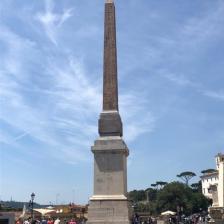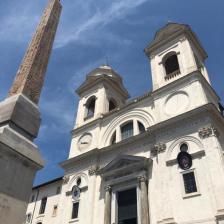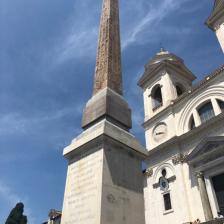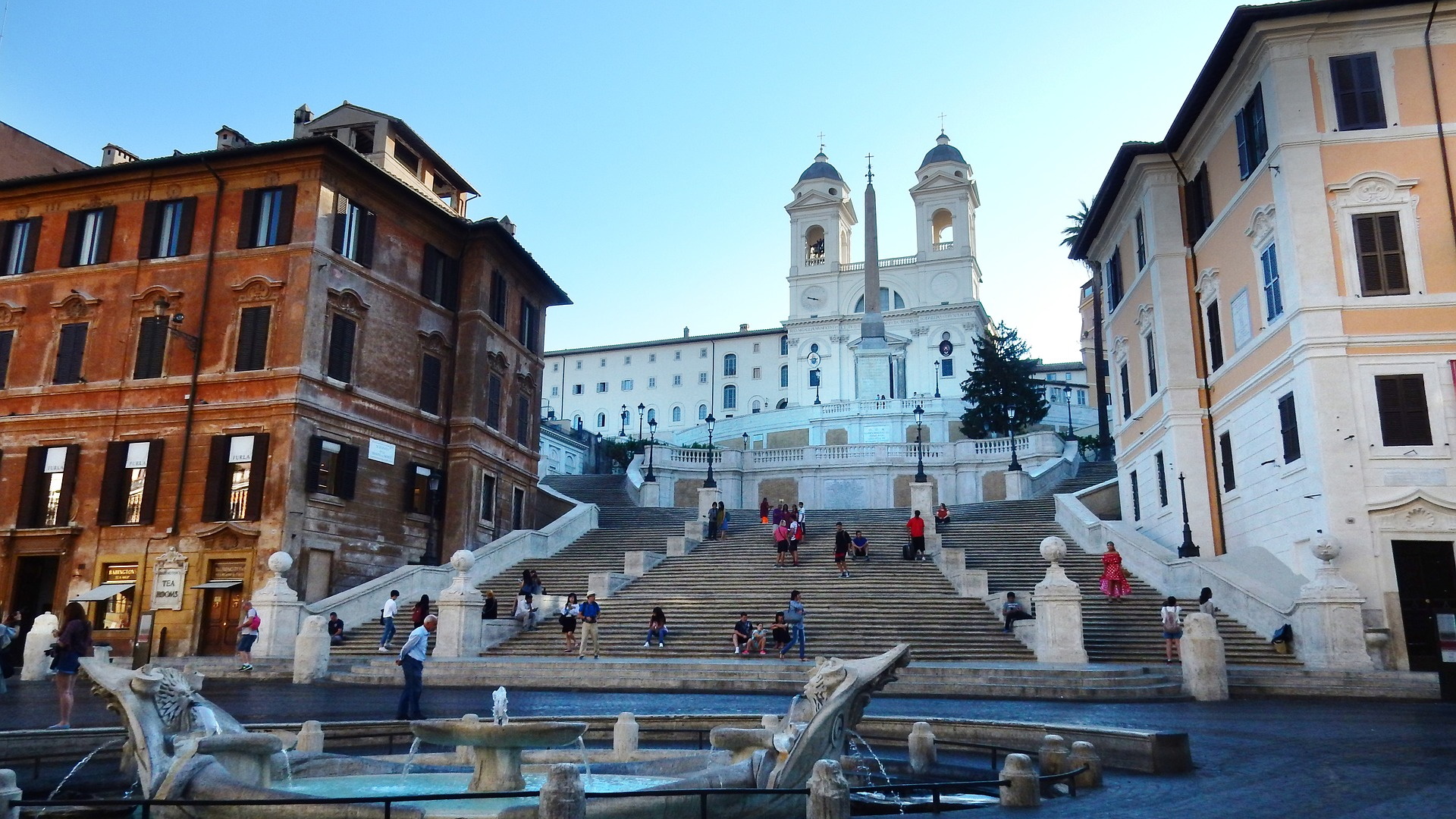
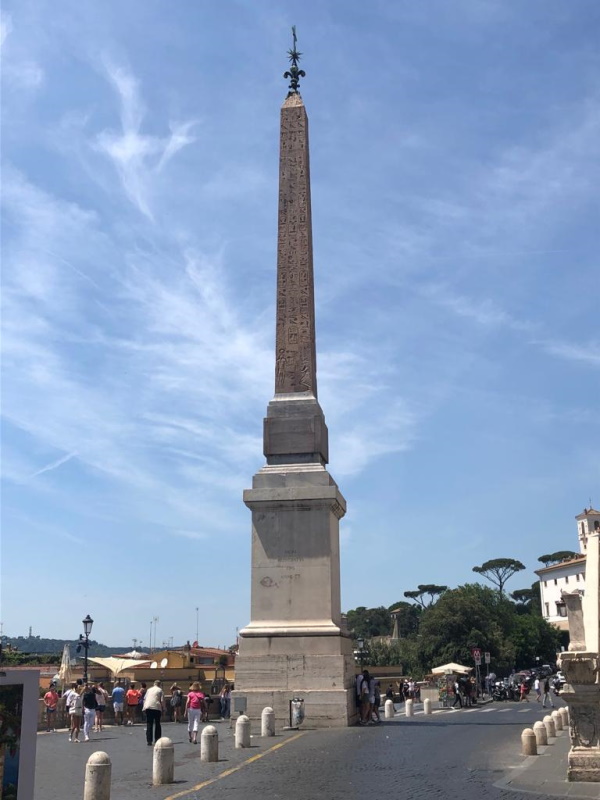
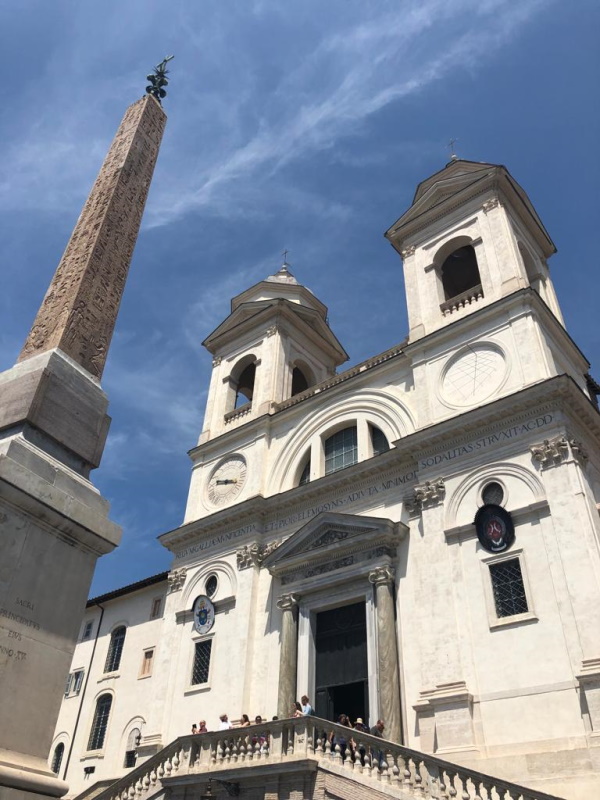
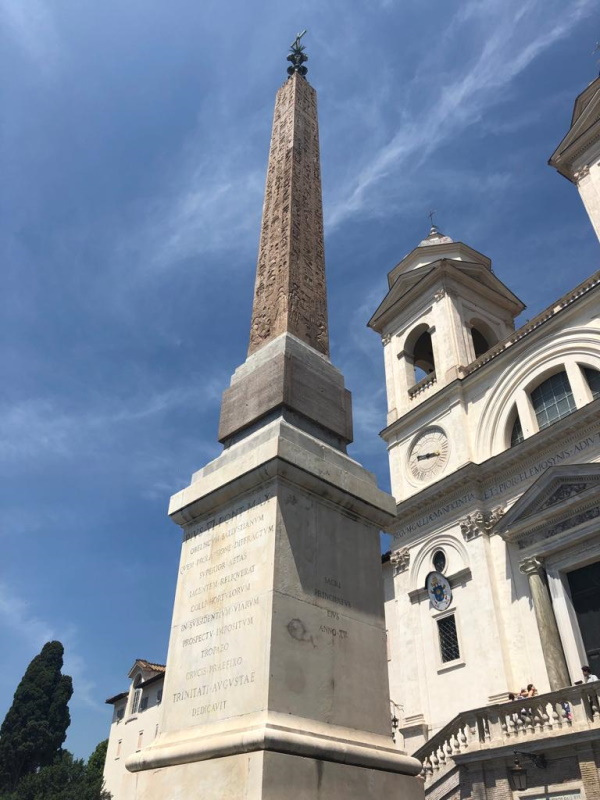
El obelisco se erige frente a la Iglesia de Trinità dei Monti, justo en lo alto de la famosa escalera de la plaza de España. A diferencia de otros obeliscos traídos a Roma sin inscripciones y que permanecieron sin ellas, este fue decorado con jeroglíficos tras su traslado, al igual que los de la piazza Navona y el Pincio.
Datado entre los siglos II y III d. C. y tallado en granito rojo, el obelisco mide 13,91 metros de altura; con su base, alcanza los 15,21 metros.
La decoración que lo recubría se basaba en una copia de una antigua inscripción del obelisco de la piazza del Popolo. Sin embargo, la ejecución fue bastante imprecisa, hasta el punto de que algunos signos parecen haber sido tallados al revés. La práctica de copiar no era nueva, ya que también era bastante común en Egipto.
Se desconoce la fecha de su traslado a Roma, pero es seguro que el obelisco se erigió inicialmente en los Horti Sallustiani - de ahí su nombre - entre el Quirinal y el Pincio. Tras la muerte de sus propietarios, el obelisco y los jardines fueron adquiridos por el emperador Tiberio.
Afortunadamente, permaneció intacta y en pie durante la devastación del año 410 a manos de Alarico y los godos. Con el tiempo se derrumbó, pero a pesar de haber permanecido abandonada en tres pedazos durante siglos en lo que hoy es la via Sicilia, nunca cayó en el olvido.
El papa Sisto V quiso erigirla frente a la iglesia de Santa Maria degli Angeli e dei Martiri, y por ello encomendó su restauración a Maderno, pero el proyecto nunca se concretó.
Aproximadamente un siglo después, Atanasio Kircher, quien había descubierto el secreto de su inscripción, propuso al papa Alessandro VII que se volviera a erigir, pero no fue hasta 1734 que el papa Clemente XII logró que se trasladara a la Plaza de San Juan de Letrán, cerca de la Escalera Santa. Sin embargo, nunca se erigió allí; en cambio, las tres piezas permanecieron abandonadas en el suelo durante 50 años. Durante este período, incluso se negoció su posible traslado a París, donde se habría erigido frente a la catedral de Notre-Dame.
Finalmente, el papa Pio VI decidió, a pesar de las numerosas opiniones negativas y la preocupación de los Padres Mínimos de la Trinidad, que temían por la fachada de su iglesia, erigirlo en lo alto de la Plaza de España. La tarea se encomendó al arquitecto Giovanni Antinori.
La cima del Obelisco Salustiano fue coronada con los símbolos heráldicos del Papa y una cruz que contenía un fragmento de la Santa Cruz, las reliquias de san José, san Francisco de Paola, Pio V y los apóstoles Pedro y Pablo. La obra se terminó en 1787 y la inauguración tuvo lugar el 20 de abril del mismo año.
Piazza di Spagna - Plaza de España
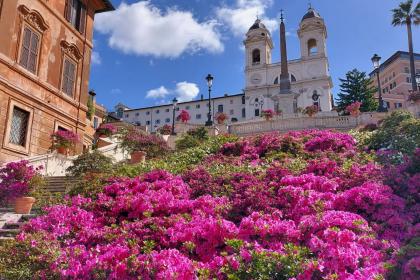
 Condividi
Condividi
Iglesia y convento de Trinità dei Monti
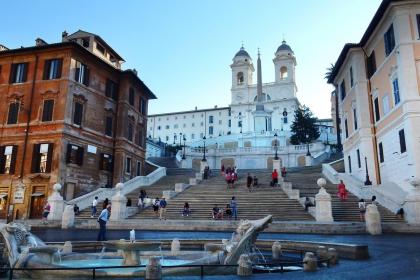
 Condividi
Condividi
Escalera de Trinità dei Monti
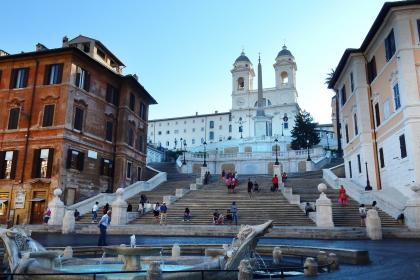
 Condividi
Condividi
Informaciones
 Condividi
Condividi
Location
Para conocer todos los servicios de accesibilidad, visite la sección Roma accesible.












































